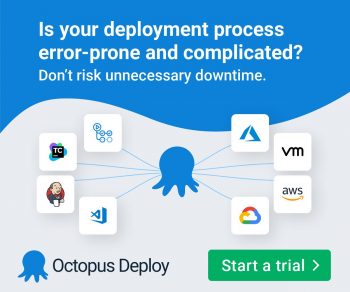Open banking is a regulatory framework designed to make it easier for consumers to share their financial data with banks, fintech companies, and third-party providers using application programming interfaces (APIs). These regulations aim to give consumers greater control over their financial lives by making it easier to access the financial products they want – even if their primary bank doesn’t offer it.
In addition to greater flexibility and control for consumers, open banking also levels the playing field by enabling smaller and newer players like fintechs and challenger banks to compete with larger, more established legacy players. The idea is to inject greater transparency and competition into the market while also boosting customer satisfaction.
Open banking is already a reality in the EU and UK, and initiatives are set to hit North America next. Having been down this road recently in my work with EU and UK banks, here’s what US and Canadian banks need to know about open banking and how it will impact their operations.
Is Open Banking Coming to North America?
While open banking has been a reality in Europe since the Second Payment Services Directive (PSD2) went into effect in late 2020, will it become a reality in the US? It’s looking that way.
Recent events suggest a path for open banking in North American nations:
USA: President Joseph Biden signed an executive order in July 2021 directing the Consumer Financial Protection Bureau (CFPB) to move forward with open banking efforts and establish rules for consumer data sharing under Section 1033 of the Dodd-Frank Act that would make it easier for bank customers to share their data with fintechs or TPPs.
Canada: The Canadian government issued a report outlining a plan to introduce open banking to the nation’s financial system by 2023.
Mexico: Open banking regulations have been in place in Mexico since the 2018 passage of the nation’s “Fintech Law”. Under the law, fintechs are required to share data using regulated APIs.
But despite these recent developments how likely is it that open banking regulations are going to become a reality? Especially in the US where control of government may change hands after the 2024 presidential election?
It’s hard to predict how potential new US leadership will view these regulations. While more conservative American politicians have historically taken anti-regulatory stances, it’s unclear if a new administration would take direct aim at the proposed regulations if and when they assumed power.
This means that US and Canadian banks should make sure they are taking the necessary steps to prepare for how these regulations will impact their business operations.
What I’ve Learned About Open Banking
Some regulations are industry-driven while others are consumer-driven. North America’s open banking initiative shares one of the biggest challenges that I’ve dealt with in the EU and UK markets: it’s regulator-driven.
A few years ago, I worked at a major UK bank when the EU and UK kicked off their open banking regulations. In their effort to inject fairness into the market, regulators unintentionally injected a sense of haste to boot. EU and UK banks scrambled to understand the new rules, research how to safely and responsibly share customer data with potential competitors, and remain compliant and competitive when the rules went into effect. In the rush to be compliant, it was easy to overlook opportunities to deliver exciting and innovative solutions that would delight customers.
The reality is with any regulator-first initiative, adoption proves to be challenging. Regulators must explain why they’re undertaking the initiative to banks – who must in turn explain to their customers how it impacts their lives. In other words, banks will both be learning the new rules of open banking themselves while simultaneously teaching them to their consumers and understanding how this changes their competitive landscape as well. North American banks will face the same pressure to follow their regulators’ framework. Despite that pressure, it’s important to remember to focus on delivering exciting new solutions and products for customers.
What North American Banks Need to Know About Open Banking
North American banks can get ahead of the disruption. Here’s what to expect:
Empowered Customers Can Use Products Across Multiple Organizations: Easier control over data will mean bank customers have more financial options. Customers can have a debit card with one organization, a mortgage with another, an auto loan with another, crypto investments with another, and so on. Banks should consider how this impacts relationships with customers, who are no longer hindered by the inertia of slow and cumbersome data-sharing capabilities.
Financial Innovation Becomes a Differentiator: Current difficulties with data-sharing leave consumers unmotivated to switch banks and create inertia for banks to innovate new products. Open banking breaks this inertia by putting pressure on banks to focus on the speed, ease of use, and innovation their customers have come to expect.
More Financial Competitors Enter the Market: Newer players will have the opportunity to step up and offer compelling financial services for consumers. Banks must understand that they are competing with newer fintechs as well as other legacy banks.
New Types of Open Banking Fraud: Unfortunately, the new banking channels that consumers will use to access new financial products will inevitably be targeted by bad actors. Banks should consider how consumers will use these new channels – and how fraudsters could abuse them.
Data Privacy Concerns and an Evolving Financial Landscape: Open banking raises new questions over data privacy and protections meaning the immediate challenges North American banks face will not be the end of the story. New regulations will emerge eventually, so be prepared to pivot.
Top Five Ways North American Banks Can Prepare for Open Banking
As with any new regulation, open banking will bring a host of challenges for banks when it goes into effect. In order to thrive in this new environment, here are steps North American banks should consider as they seek to implement open banking practices:
- Re-think your Risk Assessment Strategy
If your bank has a risk assessment with certain definitions, that assessment will likely produce suboptimal results. That’s because both the products and the participants will be different in an open banking environment. Instead, approach risk assessment by understanding how your consumers use products and services and with whom they share their data. If you know what motivates your customers, you’ll also be able to learn how fraudsters leverage that motivation to their own ends.
- Monitor Fraud Levels Closely and Proactively
Because customers can use third-party providers (TPPs) to transact in an open banking environment, they might not think to notify their bank about potential problems. Instead, they’ll notify the TPP who may or may not notify the bank. This can lead to communication gaps in reporting fraud. Watch for data anomalies (ideally in real time) and respond to them quickly because they could be early signs of a bigger problem. For example, a TPP that suddenly triples its typical transaction value in a 24-hour period is a red flag to investigate quickly.
- Make Sure Your Bank’s Strategy is Flexible
Open banking regulations will change eventually. When this happens your bank will have to shift strategies accordingly. If your bank’s solution only addresses fraud for omnichannel solutions available through open banking, it might not be able to tackle fraud that occurs in traditional channels. Make sure your bank’s solutions work seamlessly across your different channels.
- Embrace Challenges and Opportunities with Fintech Competitors
New fintech players in the market bring new challenges for banks. But they can also be a catalyst for your bank to find new opportunities to deliver innovative products. Some banks have even launched their own digital challenger entities that release agile products and force banks to innovate against themselves.
- Legacy Banks Should Play to Their Strengths
Traditional banks have built their reputations on keeping customers safe. Acknowledge your bank’s strengths by demonstrating an ability to navigate shifting regulations, touting your experience, listening to customers, and ensuring that customers feel safe, secure, and trusting of your financial institution.
Open banking will create new opportunities and challenges for US and Canadian banks. Those who are prepared and eager to embrace the challenge and take time to understand their customers will find it much easier to navigate the new landscape.












